Oral hygiene care for critically ill patients to prevent ventilator-associated pneumonia
- PMID: 33368159
- PMCID: PMC8111488
- DOI: 10.1002/14651858.CD008367.pub4
Oral hygiene care for critically ill patients to prevent ventilator-associated pneumonia
Abstract
Background: Ventilator-associated pneumonia (VAP) is defined as pneumonia developing in people who have received mechanical ventilation for at least 48 hours. VAP is a potentially serious complication in these patients who are already critically ill. Oral hygiene care (OHC), using either a mouthrinse, gel, swab, toothbrush, or combination, together with suction of secretions, may reduce the risk of VAP in these patients.
Objectives: To assess the effects of oral hygiene care (OHC) on incidence of ventilator-associated pneumonia in critically ill patients receiving mechanical ventilation in hospital intensive care units (ICUs).
Search methods: Cochrane Oral Health's Information Specialist searched the following databases: Cochrane Oral Health's Trials Register (to 25 February 2020), the Cochrane Central Register of Controlled Trials (CENTRAL) (the Cochrane Library, 2020, Issue 1), MEDLINE Ovid (1946 to 25 February 2020), Embase Ovid (1980 to 25 February 2020), LILACS BIREME Virtual Health Library (1982 to 25 February 2020) and CINAHL EBSCO (1937 to 25 February 2020). We also searched the VIP Database (January 2012 to 8 March 2020). The US National Institutes of Health Trials Registry (ClinicalTrials.gov) and the World Health Organization International Clinical Trials Registry Platform were searched for ongoing trials. No restrictions were placed on the language or date of publication when searching the electronic databases.
Selection criteria: We included randomised controlled trials (RCTs) evaluating the effects of OHC (mouthrinse, gel, swab, toothbrush or combination) in critically ill patients receiving mechanical ventilation for at least 48 hours.
Data collection and analysis: At least two review authors independently assessed search results, extracted data and assessed risk of bias in included studies. We contacted study authors for additional information. We reported risk ratio (RR) for dichotomous outcomes and mean difference (MD) for continuous outcomes, using the random-effects model of meta-analysis when data from four or more trials were combined.
Main results: We included 40 RCTs (5675 participants), which were conducted in various countries including China, USA, Brazil and Iran. We categorised these RCTs into five main comparisons: chlorhexidine (CHX) mouthrinse or gel versus placebo/usual care; CHX mouthrinse versus other oral care agents; toothbrushing (± antiseptics) versus no toothbrushing (± antiseptics); powered versus manual toothbrushing; and comparisons of other oral care agents used in OHC (other oral care agents versus placebo/usual care, or head-to-head comparisons between other oral care agents). We assessed the overall risk of bias as high in 31 trials and low in two, with the rest being unclear. Moderate-certainty evidence from 13 RCTs (1206 participants, 92% adults) shows that CHX mouthrinse or gel, as part of OHC, probably reduces the incidence of VAP compared to placebo or usual care from 26% to about 18% (RR 0.67, 95% confidence intervals (CI) 0.47 to 0.97; P = 0.03; I2 = 66%). This is equivalent to a number needed to treat for an additional beneficial outcome (NNTB) of 12 (95% CI 7 to 128), i.e. providing OHC including CHX for 12 ventilated patients in intensive care would prevent one patient developing VAP. There was no evidence of a difference between interventions for the outcomes of mortality (RR 1.03, 95% CI 0.80 to 1.33; P = 0.86, I2 = 0%; 9 RCTs, 944 participants; moderate-certainty evidence), duration of mechanical ventilation (MD -1.10 days, 95% CI -3.20 to 1.00 days; P = 0.30, I2 = 74%; 4 RCTs, 594 participants; very low-certainty evidence) or duration of intensive care unit (ICU) stay (MD -0.89 days, 95% CI -3.59 to 1.82 days; P = 0.52, I2 = 69%; 5 RCTs, 627 participants; low-certainty evidence). Most studies did not mention adverse effects. One study reported adverse effects, which were mild, with similar frequency in CHX and control groups and one study reported there were no adverse effects. Toothbrushing (± antiseptics) may reduce the incidence of VAP (RR 0.61, 95% CI 0.41 to 0.91; P = 0.01, I2 = 40%; 5 RCTs, 910 participants; low-certainty evidence) compared to OHC without toothbrushing (± antiseptics). There is also some evidence that toothbrushing may reduce the duration of ICU stay (MD -1.89 days, 95% CI -3.52 to -0.27 days; P = 0.02, I2 = 0%; 3 RCTs, 749 participants), but this is very low certainty. Low-certainty evidence did not show a reduction in mortality (RR 0.84, 95% CI 0.67 to 1.05; P = 0.12, I2 = 0%; 5 RCTs, 910 participants) or duration of mechanical ventilation (MD -0.43, 95% CI -1.17 to 0.30; P = 0.25, I2 = 46%; 4 RCTs, 810 participants).
Authors' conclusions: Chlorhexidine mouthwash or gel, as part of OHC, probably reduces the incidence of developing ventilator-associated pneumonia (VAP) in critically ill patients from 26% to about 18%, when compared to placebo or usual care. We did not find a difference in mortality, duration of mechanical ventilation or duration of stay in the intensive care unit, although the evidence was low certainty. OHC including both antiseptics and toothbrushing may be more effective than OHC with antiseptics alone to reduce the incidence of VAP and the length of ICU stay, but, again, the evidence is low certainty. There is insufficient evidence to determine whether any of the interventions evaluated in the studies are associated with adverse effects.
Copyright © 2020 The Cochrane Collaboration. Published by John Wiley & Sons, Ltd.
Conflict of interest statement
Tingting Zhao: none known Xinyu Wu: none known Qi Zhang: none known Chunjie Li: none known Helen V Worthington: none known. I am an Editor with Cochrane Oral Health. Fang Hua: none known. I am an Editor with Cochrane Oral Health.
Figures
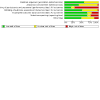
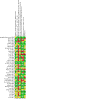
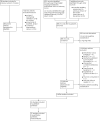

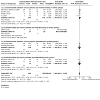
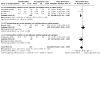
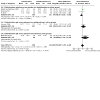

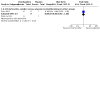
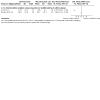
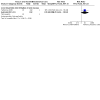
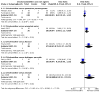
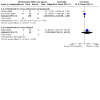
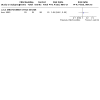
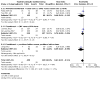
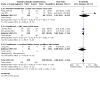
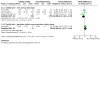
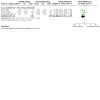
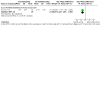
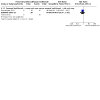
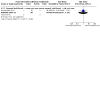

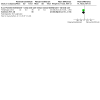

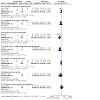
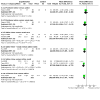
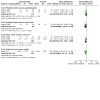
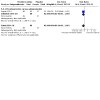
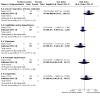
Update of
-
Oral hygiene care for critically ill patients to prevent ventilator-associated pneumonia.Cochrane Database Syst Rev. 2016 Oct 25;10(10):CD008367. doi: 10.1002/14651858.CD008367.pub3. Cochrane Database Syst Rev. 2016. Update in: Cochrane Database Syst Rev. 2020 Dec 24;12:CD008367. doi: 10.1002/14651858.CD008367.pub4. PMID: 27778318 Free PMC article. Updated.
References
References to studies included in this review
Bellissimo‐Rodrigues 2009 {published data only}
-
- Bellissimo-Rodrigues F, Bellissimo-Rodrigues WT, Viana JM, Teixeira GC, Nicolini E, Auxiliadora-Martins M, et al. Effectiveness of oral rinse with chlorhexidine in preventing nosocomial respiratory tract infections among intensive care unit patients. Infection Control & Hospital Epidemiology 2009;30(10):952-8. - PubMed
Berry 2011 {published data only}
-
- Berry AM, Davidson PM, Masters J, Rolls K, Ollerton R. Effects of three approaches to standardized oral hygiene to reduce bacterial colonization and ventilator associated pneumonia in mechanically ventilated patients: a randomised control trial. International Journal of Nursing Studies 2011;48(6):681-8. - PubMed
Berry 2013 {published data only}
-
- Berry A M. A comparison of Listerine and sodium bicarbonate oral cleansing solutions on dental plaque colonisation and incidence of ventilator associated pneumonia in mechanically ventilated patients: a randomised control trial. Intensive & Critical Care Nursing 2013;29(5):275-81. - PubMed
Bopp 2006 {published data only}
-
- Bopp M, Darby M, Loftin KC, Broscious S. Effects of daily oral care with 0.12% chlorhexidine gluconate and a standard oral care protocol on the development of nosocomial pneumonia in intubated patients: a pilot study. Journal of Dental Hygiene 2006;80(3):9. - PubMed
Cabov 2010 {published and unpublished data}
-
- Cabov T, Macan D, Husedzinovic I, Skrlin-Subic J, Bosnjak D, Sestan-Crnek S, et al. The impact of oral health and 0.2% chlorhexidine oral gel on the prevalence of nosocomial infections in surgical intensive-care patients: a randomized placebo-controlled study. Wiener Klinische Wochenschrift 2010;122(13-14):397-404. - PubMed
Caruso 2009 {published data only}
-
- Caruso P, Denari S, Ruiz SAL, Demarzo SE, Deheinzelin D. Saline instillation before tracheal suctioning decreases the incidence of ventilator-associated pneumonia. Critical Care Medicine 2009;37(1):32-8. - PubMed
Dahiya 2012 {published data only}
-
- Dahiya U. Decontamination with chlorhexidine gluconate reduces the incidence of ventilator associated pneumonia. Nursing Journal of India 2012;103:89-91. - PubMed
De Lacerda 2017 {published data only}
-
- De Lacerda Vidal CF, Vidal AK de L, Monteiro JG de M, Cavalcanti A, Henriques AP de C, Olveira M, et al. Impact of oral hygiene involving toothbrushing versus chlorhexidine in the prevention of ventilator-associated pneumonia: a randomized study. BMC Infectious Diseases 2017;17:112 [Erratum appears in BMC Infect Dis. 2017 Feb 27;17 (1):173; PMID: 28241748]. - PMC - PubMed
Feng 2012 {published data only}
-
- Feng S, Sun X, Chen Y. Application of different mouthwashes in oral nursing for patients with orotracheal intubation. China Medicine and Pharmacy 2012;8(2):100-1.
Fields 2008 {published data only}
-
- Fields LB. Oral care intervention to reduce incidence of ventilator-associated pneumonia in the neurologic intensive care unit. Journal of Neuroscience Nursing 2008;40(5):291-8. - PubMed
Fu 2019 {published data only}
-
- Fu T, Zhong Q, Zheng C. Bacteriostasis effect of oral administration of chlorhexidine on patients with mechanical ventilation and prevention and treatment of ventilator - associated pneumonia. Chinese Nursing Research 2019;33(3):431-4.
Grap 2011 {published data only}
-
- Grap MJ, Munro CL, Hamilton VA, Elswick RK Jr, Sessler CN, Ward KR. Early, single chlorhexidine application reduces ventilator-associated pneumonia in trauma patients. Heart & Lung 2011;40(5):e115-22. - PubMed
Hanifi 2017 {published data only}
-
- Hanifi N, Masoumi M, Jamshidi MR, Faghihzadeh S. The effect of ozonated water and chlorhexidine gluconate on prevention of ventilator-associated pneumonia: a double-blind, randomized, clinical trial. Iranian Red Crescent Medical Journal 2017;19(10):e60576.
Hu 2009 {published data only}
-
- Hu X, Chen X. Application of improved oral nursing method to orotracheal intubation. Chinese Journal of Misdiagnostics 2009;9(17):4058-9.
Irani 2019 {published data only}
-
- Irani H, Sargazi G, Dahmardeh AR, Mofrad ZP. The effect of oral care with miswak versus chlorhexidine on the incidence of ventilator-associated pneumonia: a clinical trial study. Medical-Surgical Nursing Journal 2019;8(4):e100387.
Khaky 2018 {published data only}
Koeman 2006 {published data only}
-
- Koeman M, Van der Ven AJ, Hak E, Joore HC, Kaasjager K, De Smet AG, et al. Oral decontamination with chlorhexidine reduces the incidence of ventilator-associated pneumonia. American Journal of Respiratory & Critical Care Medicine 2006;173(12):1348-55. - PubMed
-
- Koeman M, Van der Ven AJ, Hak E, Joore JC, Kaasjager HA, De Smet AM, et al. Less ventilator-associated pneumonia after oral decontamination with chlorhexidine; a randomised trial. Nederlands Tijdschrift voor Geneeskunde 2008;152(13):752-9. - PubMed
Kusahara 2012a {published data only}
-
- Kusahara DM, Peterlini MA, Pedreira ML. Oral care with 0.12% chlorhexidine for the prevention of ventilator-associated pneumonia in critically ill children: randomised, controlled and double blind trial. International Journal of Nursing Studies 2012;49(11):1354-63. - PubMed
-
- Kusahara DM, Peterlini MAS, Pedreira MLG. Randomized, controlled and double blinded trial of oral decontamination with 0.12% chlorhexidine for the prevention of ventilator-associated pneumonia in children. Pediatric Critical Care Medicine 2011;12(3, Suppl 1):A16.
-
- Pedreira MLG, Kusahara DM, De Carvalho WB, Nunez SC, Peterlini MAS. Oral care interventions and oropharyngeal colonization in children receiving mechanical ventilation. American Journal of Critical Care 2009;18(4):319-29. - PubMed
Long 2012 {published data only}
-
- Long Y, Mou G, Zuo Y, lv F, Feng Q, Du J. Effect of modified oral nursing method on the patients with orotracheal intubation. Journal of Nurses Training 2012;27(24):2290-3.
Lorente 2012 {published data only}
-
- Lorente L, Lecuona M, Jimenez A, Palmero S, Pastor E, Lafuente N, et al. Ventilator-associated pneumonia with or without toothbrushing: a randomized controlled trial. European Journal of Clinical Microbiology and Infectious Diseases 2012;31(10):2621-9. - PubMed
Meidani 2018 {published data only}
Meinberg 2012 {published data only}
-
- Meinberg MC, Cheade M de F, Miranda AL, Fachini MM, Lobo SM. The use of 2% chlorhexidine gel and toothbrushing for oral hygiene of patients receiving mechanical ventilation: effects on ventilator-associated pneumonia [Uso de clorexidina 2% gel e escovacao mecanica na higiene bucal de pacientes sob ventilacao mecanica: efeitos na pneumonia associada a ventilador]. Revista Brasileira de Terapia Intensiva 2012;24(4):369-74. [PMID: ] - PMC - PubMed
Mo 2016 {published data only}
-
- Mo ZD, Li XL, Ke JY, Wu JP, Chen XW. Analysis of risk factors in ventilator-associated pneumonia and preventive effect of oral care. Chinese Journal of Nosocomiology 2016;26(3):698-9, 705.
Nobahar 2016 {published data only}
Ozcaka 2012 {published data only}
-
- Ozcaka O, Basoglu OK, Buduneli N, Tasbakan MS, Bacakoglu F, Kinane DF. Chlorhexidine decreases the risk of ventilator-associated pneumonia in intensive care unit patients: a randomized clinical trial. Journal of Periodontal Research 2012;47(5):584-92. - PubMed
Panchabhai 2009 {published data only}
-
- Panchabhai TS, Dangayach NS, Krishnan A, Kothari VM, Karnad DR. Oropharyngeal cleansing with 0.2% chlorhexidine for prevention of nosocomial pneumonia in critically ill patients: an open-label randomized trial with 0.01% potassium permanganate as control. Chest 2009;135(5):1150-6. - PubMed
Pobo 2009 {published data only}
-
- Pobo A, Lisboa T, Rodriguez A, Sole R, Magret M, Trefler S, et al. A randomized trial of dental brushing for preventing ventilator-associated pneumonia. Chest 2009;136(2):433-9. - PubMed
Prendergast 2012 {published data only}
-
- Prendergast V, Hagell P, Hallberg IR. Electric versus manual tooth brushing among neuroscience ICU patients: is it safe? Neurocritical Care 2011;14(2):281-6. - PubMed
-
- Prendergast V, Hallberg IR, Jakobsson U, Renvert S, Moran A, Gonzalez O. Comparison of oropharyngeal and respiratory nosocomial bacteria between two methods of oral care: a randomized controlled trial. Journal of Neuroscience and Neurosurgical Nursing 2012;1(1):10-8.
-
- Prendergast V, Jakobsson U, Renvert S, Hallberg IR. Effects of a standard versus comprehensive oral care protocol among intubated neuroscience ICU patients: results of a randomized controlled trial. Journal of Neuroscience Nursing 2012;44(3):134-46. - PubMed
-
- Prendergast V. Safety and efficacy of oral care for intubated neuroscience intensive care patients. In: Doctoral Dissertation Series 2012-3. Lund, Sweden: Lund University, 2012:1-86.
Roca Biosca 2011 {published data only}
-
- Roca Biosca A, Anguera Saperas L, García Grau N, Rubio Rico L, Velasco Guillén MC. Prevention of mechanical ventilator-associated pneumonia: a comparison of two different oral hygiene methods. Enfermería Intensiva 2011;22(3):104-11. - PubMed
Scannapieco 2009 {published data only}
Seguin 2006 {published data only}
-
- Seguin P, Tanguy M, Laviolle B, Tirel O, Malledant Y. Effect of oropharyngeal decontamination by povidone-iodine on ventilator-associated pneumonia in patients with head trauma. Critical Care Medicine 2006;34(5):1514-9. - PubMed
Seguin 2014 {published data only}
-
- Seguin P, Laviolle B, Dahyot-Fizelier C, Dumont R, Veber B, Gergaud S, et al. Effect of oropharyngeal povidone-iodine preventive oral care on ventilator-associated pneumonia in severely brain-injured or cerebral hemorrhage patients: a multicenter, randomized controlled trial. Critical Care Medicine 2014;42:1-8. - PubMed
Stefanescu 2013 {published data only}
-
- Stefanescu BM, Hétu C, Slaughter JC, O'Shea TM, Shetty AK. A pilot study of Biotene OralBalance gel for oral care in mechanically ventilated preterm neonates. Contemporary Clinical Trials 2013;35(2):33-9. - PubMed
Tang 2013 {published data only}
-
- Tang J, Chen SL, Deng JL. Efficacy of mouth cavity irrigation in prevention of ventilator-associated pneumonia. Chinese Journal of Nosocomiology 2013;23(17):4119-21.
Tantipong 2008 {published data only}
-
- Silvestri L, Van Saene HK, Milanese M, Zei E, Blazic M. Prevention of ventilator-associated pneumonia by use of oral chlorhexidine. Infection Control & Hospital Epidemiology 2009;30(1):101-3. - PubMed
-
- Tantipong H, Morkchareonpong C, Jaiyindee S, Thamlikitkul V. Randomized controlled trial and meta-analysis of oral decontamination with 2% chlorhexidine solution for the prevention of ventilator-associated pneumonia. Infection Control & Hospital Epidemiology 2008;29(2):131-6. - PubMed
Tuon 2017 {published data only}
-
- Tuon FF, Gavrilko O, Almeida S, Sumi ER, Alberto T, Rocha JL, et al. Prospective, randomised, controlled study evaluating early modification of oral microbiota following admission to the intensive care unit and oral hygiene with chlorhexidine. Journal of Global Antimicrobial Resistance 2017;8:159-63. - PubMed
Xu 2007 {published data only}
-
- Xu J, Feng B, He L, Shen H, Chen XY. Influence of different oral nursing methods on ventilator-associated pneumonia and oral infection in the patients undergoing mechanical ventilation. Journal of Nursing Science 2007;7(22):56-7.
Xu 2008 {published data only}
-
- Xu HL. Application of improved oral nursing method to the prevention of ventilator-associated pneumonia. Journal of Qilu Nursing 2008;14(19):15-6.
Yao 2011 {published data only}
-
- Yao L, Chang C, Wang C, Chen C. Effect of an oral care protocol in preventing ventilator associated pneumonia in ICU patients. Critical Care 2008;12(Suppl 2):Abs No P48.
-
- Yao LY, Chang CK, Maa SH, Wang C, Chen CC. Brushing teeth with purified water to reduce ventilator-associated pneumonia. Journal of Nursing Research 2011;19(4):289-97. - PubMed
Zhao 2012 {published data only}
-
- Zhao Y. Research on application of Yikou gargle in prevention of ventilation associated pneumonia. Chinese Journal of Nosocomiology 2012;23(22):5232-3.
References to studies excluded from this review
Abusibeih 2010 {published data only}
-
- Abusibeih A, Lev A. Randomized control trial comparing oral care methods and VAP. Intensive Care Medicine 2010;36:S329.
Anon 2012 {published data only}
-
- Anon. EB57 Development of an oral care-based programme for prevention of ventilator-associated pneumonia. Critical Care Nurse 2012;32(2):e34.
Atashi 2018 {published data only}
Baradari 2012 {published data only}
-
- Baradari AG, Khezri HD, Arabi S. Comparison of antibacterial effects of oral rinses chlorhexidine and herbal mouth wash in patients admitted to intensive care unit. Bratislavske Lekarske Listy 2012;113(9):556-60. - PubMed
Bellissimo‐Rodrigues 2014 {published data only}
-
- Bellissimo-Rodrigues WT, Menegueti MG, Gaspar GG, Nicolini EA, Auxiliadora-Martins M, Basile-Filho A, et al. Effectiveness of a dental care intervention in the prevention of lower respiratory tract nosocomial infections among intensive care patients: a randomized clinical trial. Infection Control and Hospital Epidemiology 2014;35(11):1342-8. - PubMed
Bordenave 2011 {published data only}
-
- Bordenave C. Evaluation of the effectiveness of a protocol of intensification of mouth care (teeth brushing and chlorhexidine 0.12%) on the colonisation of tracheal aspirations in intubated and ventilated patients in intensive care. Recherche en Soins Infirmiers 2011;2011(106):92-8. - PubMed
Buckley 2013 {published data only}
-
- Buckley MS, Dzierba AL, Smithburger PL, McAllen KJ, Jordan CJ, Kane-Gill SL. Chlorhexidine for the prevention of ventilator associated pneumonia in critically ill adults. Journal of Infection Prevention 2013;14:162-9.
Chao 2009 {published data only}
-
- Chao YC, Chen Y, Wang KK, Lee R, Tsai H. Removal of oral secretion prior to position change can reduce the incidence of ventilator-associated pneumonia for adult ICU patients: a clinical controlled trial study. Journal of Clinical Nursing 2009;18(1):22-8. - PubMed
Chen 2008 {published data only}
-
- Chen QL, Ye XF, Jiang YZ, Yan MQ. Application of new oral care method to orotracheal intubation. Fujian Medical Journal 2008;30(5):155-7.
Da Collina 2017 {published data only}
Dale 2019 {published data only}
-
- Dale CM, Rose L, Carbone S, Smith OM, Burry L, Fan E, et al. Protocol for a multi-centered, stepped wedge, cluster randomized controlled trial of the de-adoption of oral chlorhexidine prophylaxis and implementation of an oral care bundle for mechanically ventilated critically ill patients: the CHORAL study. Trials 2019;20(1):603. - PMC - PubMed
Darnell 2015 {published data only}
-
- Darnell J. EB44 TMI: Reducing ventilator-associated pneumonia in the surgical intensive care unit. Critical Care Nurse 2015;35:e20.
DeRiso 1996 {published data only}
-
- DeRiso AJ 2nd, Ladowski JS, Dillon TA, Justice JW, Peterson AC. Chlorhexidine gluconate 0.12% oral rinse reduces the incidence of total nosocomial respiratory infection and nonprophylactic systemic antibiotic use in patients undergoing heart surgery. Chest 1996;109(6):1556-61. - PubMed
Epstein 1994 {published data only}
-
- Epstein J, Ransier A, Lunn R, Spinelli J. Enhancing the effect of oral hygiene with the use of a foam brush with chlorhexidine. Oral Surgery, Oral Medicine, Oral Pathology 1994;77(3):242-7. - PubMed
Fan 2012 {published data only}
-
- Fan T. The effect of a modified oral nursing care method on prevention of ventilator associated pneumonia. Nursing Practice and Research 2012;9(12):99-100.
Fan 2015 {published data only}
-
- Fan YL, Chang QF, Zhang L. Research of oropharyngeal cleaning methods for ventilator associated pneumonia. Chinese Journal of Nosocomiology 2015;25(12):2777-9.
Ferozali 2007 {published data only}
-
- Ferozali F, Johnson G, Cavagnaro A. Health benefits and reductions in bacteria from enhanced oral care. Special Care in Dentistry 2007;27(5):168-76. - PubMed
Fourrier 2000 {published data only}
-
- Fourrier F, Cau-Pottier E, Boutigny H, Roussel-Delvallez M, Jourdain M, Chopin C. Effects of dental plaque antiseptic decontamination on bacterial colonization and nosocomial infections in critically ill patients. Intensive Care Medicine 2000;26(9):1239-47. - PubMed
Fourrier 2005 {published data only}
-
- Fourrier F, Dubois D, Pronnier P, Herbecq P, Leroy O, Desmettre T, et al. Effect of gingival and dental plaque antiseptic decontamination on nosocomial infections acquired in the intensive care unit: a double-blind placebo-controlled multicenter study. Critical Care Medicine 2005;33(8):1728-35. - PubMed
Genuit 2001 {published data only}
-
- Genuit T, Bochicchio G, Napolitano LM, McCarter RJ, Roghman MC. Prophylactic chlorhexidine oral rinse decreases ventilator-associated pneumonia in surgical ICU patients. Surgical Infections 2001;2(1):5-18. - PubMed
Grap 2004 {published data only}
-
- Grap MJ, Munro CL, Elswick RK Jr, Sessler CN, Ward KR. Duration of action of a single, early oral application of chlorhexidine on oral microbial flora in mechanically ventilated patients: a pilot study. Heart & Lung 2004;33(2):83-91. - PubMed
Gu 2013 {published data only}
-
- Gu WJ, Liu JC. Toothbrushing for critically ill mechanically ventilated patients: a duplicated trial included? Critical Care Medicine 2013;41(7):e137-8. - PubMed
Guo 2007 {published data only}
-
- Guo MJ. Study on the new oral nursing for the patient of acute lung brain-storm through tracheal. Chinese Journal of Mordern Nursing 2007;13(26):2537-8.
Guo 2017 {published data only}
-
- Guo S, Xie L, Chen K, Ke C, Dai D, Zhang X, et al. The effects of oral care using hydrogen peroxide combined with sodium bicarbonate on neonatal ventilator associated pneumonia. Chinese Journal of Nursing 2017;52(6):645-8.
Haghighi 2017 {published data only}
-
- Haghighi A, Shafipour V, Bagheri-Nesami M, Gholipour Baradari A, Yazdani Charati J. The impact of oral care on oral health status and prevention of ventilator-associated pneumonia in critically ill patients. Australian Critical Care 2017;30:69-73. - PubMed
Houston 2002 {published data only}
-
- Houston S, Hougland P, Anderson JJ, LaRocco M, Kennedy V, Gentry LO. Effectiveness of 0.12% chlorhexidine gluconate oral rinse in reducing prevalence of nosocomial pneumonia in patients undergoing heart surgery. American Journal of Critical Care 2002;11(6):567-70. - PubMed
Jacomo 2011 {published data only}
-
- Jacomo AD, Carmona F, Matsuno AK, Manso PH, Carlotti AP. Effect of oral hygiene with 0.12% chlorhexidine gluconate on the incidence of nosocomial pneumonia in children undergoing cardiac surgery. Infection Control & Hospital Epidemiology 2011;32(6):591-6. - PubMed
Jafari 2007 {published data only}
-
- Jafari S, Ranjbar H, Kamrani F, Alavi-Majd H, Yaghmaei F. Effects of chlorhexidine and normal saline on dental plaque formation in ICU patients: a comparative study. Journal of Nurse Midwifery 2007;17(56):36-43.
Kusahara 2012b {published data only}
-
- Kusahara DM, Friedlander LT, Peterlini MAS, Pedreira MLG. Oral care and oropharyngeal and tracheal colonization by Gram-negative pathogens in children. Nursing in Critical Care 2012;17:115-22. - PubMed
Labeau 2013 {published data only}
-
- Labeau SO, Blot SI. Oral care for mechanically ventilated patients involving toothbrushing. Critical Care Medicine 2013;41(7):e136-7. - PubMed
Lai 1997 {published data only}
-
- Lai M, Huang H. Toothpaste mouth care for critically ill patients. Journal of Nursing Science 1997;12(2):106-7.
Li 2011 {published data only}
-
- Li W, Ma X, Peng Y, Cao J, Loo WTY, Hao L, et al. Application of a nano-antimicrobial film to prevent ventilator-associated pneumonia: a pilot study. African Journal of Biotechnology 2011;10(10):1926-31.
Li 2012 {published data only}
-
- Li S, Zhang H, Zhang B. Application of different oral nursing methods to prevent ventilation associated pneumonia. Practical Clinical Medicine 2012;13(5):92-3.
Liang 2007 {published data only}
-
- Liang YL, Lu LQ, Liang JT. Oral cavity nursing study in endotracheal intubation with the Baihu decoction. Journal of Nurses Training 2007;1(22):79-80.
Liao 2015 {published data only}
-
- Liao YM, Tsai JR, Chou FH. The effectiveness of an oral health care program for preventing ventilator-associated pneumonia. Nursing in Critical Care 2015;20(2):89-97. - PubMed
Liwu 1990 {published data only}
-
- Liwu A. Oral hygiene in intubated patients. Australian Journal of Advanced Nursing 1990;7(2):4-7. - PubMed
MacNaughton 2004 {published data only}
-
- MacNaughton PD, Bailey J, Donlin N, Branfield P, Williams A, Rowswell H. A randomised controlled trial assessing the efficacy of oral chlorhexidine in ventilated patients (029). Intensive Care Medicine 2004;30(Suppl):S12.
Maury 2015 {published data only}
-
- Maury E, London J, Offenstadt G. Community-acquired pneumonia. New England Journal of Medicine 2015;372(3):292. - PubMed
McCartt 2010 {published data only}
-
- McCartt PAM. Effect of Chlorhexidine Oral Spray versus Mechanical Toothbrushing and Chlorhexindine Rinse in Decreasing Ventilator Associated Pneumonia in Critically Ill Adults [PhD thesis]. Gainesville, Florida, USA: University of Florida, 2010.
McCoy 2012 {published data only}
-
- McCoy T, Fields W, Kent N. Evaluation of emergency department evidence-based practices to prevent the incidence of ventilator-acquired pneumonia. Journal of Nursing Care Quality 2012;27(1):83-8. - PubMed
Munro 2009 {published data only}
-
- Munro C, Grap M, Sessler C, McClish D. Effect of oral care interventions on dental plaque in mechanically ventilated ICU adults. American Journal of Critical Care 2007;16(3):309.
Munro 2015 {published data only}
Nasiriani 2016 {published data only}
NCT01657396 {unpublished data only}
-
- NCT01657396. Implementation and evaluaion of revised protocols for oral hygiene for mechanically ventilated patients [Implementation and evaluation of revised protocols for oral hygiene for mechanically ventilated patients in Alberta Health Services Calgary Region - a pilot project.]. www.clinicaltrials.gov/ct2/show/NCT01657396?term=01657396&draw=1&... (first received 6 August 2012).
Needleman 2011 {published data only}
-
- Needleman IG, Hirsch NP, Leemans M, Moles DR, Wilson M, Ready DR, et al. Randomized controlled trial of toothbrushing to reduce ventilator-associated pneumonia pathogens and dental plaque in a critical care unit. Journal of Clinical Periodontology 2011;38(3):246-52. - PubMed
Ogata 2004 {published data only}
-
- Ogata J, Minami K, Miyamoto H, Horishita T, Ogawa M, Sata T, et al. Gargling with povidone-iodine reduces the transport of bacteria during oral intubation. Canadian Journal of Anaesthesia 2004;51(9):932-6. - PubMed
Pawlak 2005 {published data only}
-
- Pawlak D, Semar R, Cantos K. Improving frequency of oral care in the medical intensive care unit. American Journal of Infection Control 2005;33(5):E147.
Pelucchi 2013 {published data only}
-
- Pelucchi G, Ciucur M, Giacovelli M, Lucchini A, Luongo M. Oral hygiene [L'igiene del cavo orale]. SCENARIO: Official Italian Journal of ANIARTI 2013;30:23-34.
Pivkina 2014 {published data only}
-
- Pivkina AI, Gusarov VG, Zhivotneva IV, Bodunova GE. Oral care in ventilated patients - can we improve it? Intensive Care Medicine 2014;40:S28.
Sands 2015 {published data only}
-
- Sands KM, Twigg JA, Wise MP. Oral hygiene with chlorhexidine in critically ill patients. JAMA Internal Medicine 2015;175(2):316. - PubMed
Santos 2008 {published data only}
-
- Santos PS, Mello WR, Wakim RCS, Paschoal MG. Use of oral rinse with enzymatic system in patients totally dependent in the intensive care unit [Uso de solução bucal com sistema enzimático em pacientes totalmente dependentes de cuidados em unidade de terapia intensiva]. Revista Brasileira de Terapia Intensiva 2008;20(2):154-9. - PubMed
Sebastian 2012 {published data only}
-
- Sebastian MR, Lodha R, Kapil A, Kabra SK. Oral mucosal decontamination with chlorhexidine for the prevention of ventilator-associated pneumonia in children - a randomized, controlled trial. Pediatric Critical Care Medicine 2012;13(5):e305-10. - PubMed
Segers 2006 {published data only}
-
- Segers P, Speekenbrink RG, Ubbink DT, Van Ogtrop ML, De Mol BA. Prevention of nosocomial infection in cardiac surgery by decontamination of the nasopharynx and oropharynx with chlorhexidine gluconate: a randomized controlled trial. JAMA 2006;296(20):2460-6. - PubMed
Seo 2011 {published data only}
-
- Seo HK, Choi EH, Kim JH. The effect of oral hygiene for ventilator-associated pneumonia (VAP) incidence. Journal of Korean Critical Care Nursing 2011;4(2):1.
Swartz 2015 {published data only}
-
- Swartz AW. Community-acquired pneumonia. New England Journal of Medicine 2015;372(3):293. - PubMed
Tattevin 2015 {published data only}
-
- Tattevin P, Levy HG, Gould IM. Community-acquired pneumonia. New England Journal of Medicine 2015;372(3):293. - PubMed
Tian 2017 {published data only}
-
- Tian L, Zhu R, Peng Z, Zhao X, Yu Z, Gu Y, et al. Impact of oral care with biological enzyme disinfectants on ventilator-asociated pneumonia in mechanical ventilation patients. Chinese Journal of Nosocomiology 2017;27(1):101-4, 108.
Tsai 2017 {published data only}
-
- Tsai HL, Cheng CJ, Yu CY, Lin HC, Chen CH, Lee LC, et al. The effectiveness of the use of chlorhexidine oral rinse to prevent respiratory-related pneumonia infection. International Journal of Antimicrobial Agents 2017;50:S239.
Ueda 2004 {published data only}
-
- Ueda K, Yamada Y, Toyosato A, Nomura S, Saitho E. Effects of functional training of dysphagia to prevent pneumonia for patients on tube feeding. Gerodontology 2004;21(2):108-11. - PubMed
Wang 2006 {published data only}
-
- Wang MM. The improvement of oral care in ICU intubated patients. Journal of Mudanjiang Medical College 2006;27(5):80-1.
Wang 2012 {published data only}
-
- Wang YX, He LY, Gao MR, Wang ZW, Li XY. Application of oral nursing care bundle to prevent VAP for critically surgically ill patients. Chinese Archives of General Surgery 2012;6(5):448-50.
Wang 2016 {published data only}
-
- Wang N, Lu B, Yang W, Xu D. ICU patients in clinical studies of oral care solution to reduce lung infection. Chinese Journal of Nosocomiology 2016;26(14):3342-4.
Yin 2004 {published data only}
-
- Yin XR, Liao Y. The improvement of the oral care for patients with orotracheal intubation. West China Medical Journal 2004;19(3):482.
Yun 2011 {published data only}
-
- Yun HY, Lee ES, Kim JY, Kim HS, Kim KA, Kim ES, et al. Effect of tooth-brushing on oral health and ventilator-associated pneumonia of critically ill patients. Journal of Korean Critical Care Nursing 2011;4(2):1.
Zouka 2010 {published data only}
-
- Zouka M, Soultati I, Hari H, Pourzitaki C, Paroutsidou G, Thomaidou E, et al. Oral dental hygiene and ventilator-associated pneumonia prevention in an ICU setting: comparison between two methods (preliminary data of a randomised prospective study). Intensive Care Medicine 2010;36:S103.
References to studies awaiting assessment
Chacko 2017 {published data only}
-
- Chacko R, Rajan A, Lionel P, Thilagavathi M, Yadav B, Premkumar J. Oral decontamination techniques and ventilator-associated pneumonia. British Journal of Nursing 2017;26:594-9. - PubMed
Hashemi 2018 {published data only}
-
- Hashemi ST, Alikiaii B, Ali Fallah-Medvari M, Karimi F, Fallah-Medvari A. Comparison of effects of chlorhexidine mouthwash versus stop-snoring mouthwash in prevention of ventilator-associated pneumonia. Journal of Isfahan Medical School 2018;36:227-32.
Hashemi 2019 {published data only}
-
- Hashemi ST, Alikiaii B, Fallah Medvari MA, Karimi F, Fallah Medvari A. Comparison of effects of chlorhexidine mouthwash with herbal cinnamol mouthwash on prevention of ventilator associated pneumonia. Medical Journal of Tabriz University of Medical Sciences and Health Services 2020;41(6):91-7.
IRCT20110427006318N12 {published data only}
-
- IRCT20110427006318N12. Effect of propolis mouthwash on incidence of pneumonia in hospitalized patient in critical care unit [Effect of propolis mouthwash on incidence of ventilator-associated pneumonia in hospitalized patient in critical care unit]. www.who.int/trialsearch/Trial2.aspx?TrialID=IRCT20110427006318N12 (first received 2 April 2019).
IRCT2013050813278N1 {published data only}
-
- IRCT2013050813278N1. The effect of oral care on pulmonary infection in intensive care unit [Comparison of two methods of oral care on oral health and the prevention of ventilator-associated pneumonia in mechanically ventilated patients in intensive care unit]. www.who.int/trialsearch/Trial2.aspx?TrialID=IRCT2013050813278N1 (first received 25 May 2013).
IRCT201512115363N8 {published data only}
-
- IRCT201512115363N8. Effect of damask rose extract in the prevention of ventilator-associated pneumonia [Clinical trial to compare the effect of damask rose extract and chlorhexidine in prevention of ventilator-associated pneumonia in critically ill patients]. www.who.int/trialsearch/Trial2.aspx?TrialID=IRCT201512115363N8 (first received 4 December 2016).
IRCT2016052828134N1 {published data only}
-
- IRCT2016052828134N1. Effects of botanical mouthwash of aloe vera on ventilator associated pneumonia of patients having endotracheal tube hospitalized in the intensive care unit. www.who.int/trialsearch/Trial2.aspx?TrialID=IRCT2016052828134N1 (first received 21 June 2016).
IRCT2017022032676N1 {published data only}
-
- IRCT2017022032676N1. Comparing the effect of persica and chlorhexidine on the prevention of ventilator associated pneumonia in patient admitted in ICU [Effect of persica and chlorhexidine on the prevention of ventilator associated pneumonia]. www.who.int/trialsearch/Trial2.aspx?TrialID=IRCT2017022032676N1 (first received 22 April 2017).
IRCT2017050727819N4 {published data only}
-
- IRCT2017050727819N4. The effects of mouthwash on prevention of pneumonia [The comparison of the effects of orthodentol and chlorhexidine mouthwash on prevention of ventilator associated pneumonia in mechanically ventilated patients]. www.who.int/trialsearch/Trial2.aspx?TrialID=IRCT2017050727819N4 (first received 26 June 2017).
IRCT20171225038053N1 {published data only}
-
- IRCT20171225038053N1. Effect of two methods mouth wash (chlorhexidine and chlorhexidine combined with hydrogen peroxide solution) on frequency of oral plaques and ventilator-associated pneumonia in patients undergoing mechanical ventilation [Comparison of the effect of two methods mouth wash (chlorhexidine and chlorhexidine combined with hydrogen peroxide solution) on frequency of oral plaques and ventilator-associated pneumonia in patients undergoing mechanical ventilation in the intensive care unit of Imam Khomeini Educational Center, Urmia, 2017-18]. www.who.int/trialsearch/Trial2.aspx?TrialID=IRCT20171225038053N1 (first received 9 September 2018).
IRCT20180520039739N2 {published data only}
-
- IRCT20180520039739N2. Evaluation of effect of chlorhexidine on prevention of ventilator associated pneumonia [Comparison of the effect of Chlorhexidine mouthwash with Dine mouthwash on prevention of ventilator-associated pneumonia in pediatric intensive care unit]. www.who.int/trialsearch/Trial2.aspx?TrialID=IRCT20180520039739N2 (first received 26 November 2018).
IRCT20191012045066N1 {published data only}
-
- IRCT20191012045066N1. The effects of oral care program on oropharyngeal complications and the occurrence of ventilator associated pneumonia [Evaluation and comparison of the effects of three oral care programs on oropharyngeal complications and the occurrence of ventilator associated pneumonia in patients undergoing mechanical ventilation]. www.who.int/trialsearch/Trial2.aspx?TrialID=IRCT20191012045066N1 (first received 7 November 2019).
Jamshidi 2016 {published data only}
-
- Jamshidi MR, Qatreh Samany F, Goli Farhood G, Qodrati S, Falakaflaki B. Evaluating the effect of chlorhexidine and tooth brushing in preventing the ventilator associated pneumonia. Journal of Zanjan University of Medical Sciences and Health Services 2016;24(105):9-17.
Mehrabadi 2015 {published data only}
-
- Gholami Mehrabadi M, Khosravi SH, Rezaie K, Malekianzadeh B, Ghorbanpour M, Moslemi A, et al. The effect of Echinacea mouthwash on ventilator associated pneumonia in patients in intensive care units. Medical-Surgical Nursing Journal 2015;4(3):13-20.
References to ongoing studies
RBR‐7p6568 {published data only}
-
- RBR-7p6568. Oral hygiene in critically ill patients [Oral hygiene in critically ill patients - a randomized controlled trial]. www.who.int/trialsearch/Trial2.aspx?TrialID=RBR-7p6568 (first received 8 October 2019).
TCTR20190530003 {published data only}
-
- TCTR20190530003. Efficacy of moraceae with chlorhexidine mouthwash on microbial flora of critically ill intubated patients [Efficacy of moraceae with chlorhexidine mouthwash on microbial flora of critically ill intubated patients: a randomized controlled pilot study]. www.who.int/trialsearch/Trial2.aspx?TrialID=TCTR20190530003 (first received 29 May 2019). - PMC - PubMed
Additional references
Alhazzani 2013
-
- Alhazzani W, Smith O, Muscedere J, Medd J, Cook D. Toothbrushing for critically ill mechanically ventilated patients: a systematic review and meta-analysis of randomized trials evaluating ventilator-associated pneumonia. Critical Care Medicine 2013;41(2):646-55. - PubMed
Apostolopoulou 2003
-
- Apostolopoulou E, Bakakos P, Katostaras T, Gregorakos L. Incidence and risk factors for ventilator-associated pneumonia in 4 multidisciplinary intensive care units in Athens. Respiratory Care 2003;48(7):681-8. - PubMed
Arthur 2016
ATS Guideline 2005
-
- American Thoracic Society, Infectious Diseases Society of America. Guidelines for the management of adults with hospital-acquired, ventilator-associated, and healthcare-associated pneumonia. American Journal of Respiratory and Critical Care Medicine 2005;171(4):388-416. - PubMed
Azoulay 2006
-
- Azoulay E, Timsit JF, Tafflet M, De Lassence A, Darmon M, Zahar JR, et al. Candida colonization of the respiratory tract and subsequent pseudomonas ventilator-associated pneumonia. Chest 2006;129(1):110-7. - PubMed
Berry 2007
-
- Berry AM, Davidson PM, Masters J, Rolls K. Systematic literature review of oral hygiene practices for intensive care patients receiving mechanical ventilation. American Journal of Critical Care 2007;16(6):552-62. - PubMed
Bo 2014
CONSORT 2012
-
- Altman DG, Moher D, Schultz KF. Improving the reporting of randomised trials: the CONSORT statement and beyond. Statistics in Medicine 2012;31(25):2985-97. - PubMed
Contentin 2014
-
- Contentin L, Ehrmann S, Giraudeau B. Heterogeneity in the definition of mechanical ventilation duration and ventilator-free days. American Journal of Respiratory and Critical Care Medicine 2014;189(8):998-1002. - PubMed
Cook 1998
-
- Cook DJ, Walter SD, Cook RJ, Griffith LE, Guyatt GH, Leasa D, et al. Incidence of and risk factors for ventilator-associated pneumonia in critically ill patients. Annals of Internal Medicine 1998;29(6):433-46. - PubMed
D'Amico 2009
-
- D'Amico R, Pifferi S, Torri V, Brazzi L, Parmelli E, Liberati A. Antibiotic prophylaxis to reduce respiratory tract infections and mortality in adults receiving intensive care. Cochrane Database of Systematic Reviews 2009, Issue 4. Art. No: CD000022. [DOI: 10.1002/14651858.CD000022.pub3] - DOI - PMC - PubMed
Ding 2017
Fourrier 1998
-
- Fourrier F, Duvivier B, Boutigny H, Roussel-Delvallez M, Chopin C. Colonization of dental plaque: a source of nosocomial infections in intensive care unit patients. Critical Care Medicine 1998;26(2):301-8. - PubMed
GRADEpro 2020 [Computer program]
-
- GRADEpro GDT: GRADEpro Guideline Development Tool. Grade Working Group. McMaster University, 2020.
Guyatt 2008
Gyssens 2011
-
- Gyssens IC. Antibiotic policy. International Journal of Antimicrobial Agents 2011;38 Suppl:11-20. [PMID: ] - PubMed
Hao 2015
Higgins 2011
-
- Higgins JPT, Green S, editor(s). Cochrane Handbook for Systematic Reviews of Interventions version 5.1.0 (updated March 2011). The Cochrane Collaboration, 2011. Available from training.cochrane.org/handbook/archive/v5.1/.
Horan 2008
-
- Horan TC, Andrus M, Dudeck MA. CDC/NHSN surveillance definition of health care-associated infection and criteria for specific types of infections in the acute care setting. American Journal of Infection Control 2008;36(5):309-32. - PubMed
Khasanah 2019
Klompas 2007
-
- Klompas M. Does this patient have ventilator-associated pneumonia? JAMA 2007;297(14):1583-93. - PubMed
Klompas 2014
Labeau 2011
-
- Labeau SO, Van de Vyver K, Brusselaers N, Vogelaers D, Blot SI. Prevention of ventilator-associated pneumonia with oral antiseptics: a systematic review and meta-analysis. Lancet Infectious Diseases 2011;11(11):845-54. - PubMed
La Combe 2018
-
- La Combe B, Bleibtreu A, Messika J, Fernandes R, Clermont O, Branger C, et al. Decreased susceptibility to chlorhexidine affects a quarter of Escherichia coli isolates responsible for pneumonia in ICU patients. Intensive Care Medicine 2018;44(4):531-3. - PubMed
Lefebvre 2019
-
- Lefebvre C, Glanville J, Briscoe S, Littlewood A, Marshall C, Metzendorf M-I, et al. Technical Supplement to Chapter 4: Searching for and selecting studies. In: Higgins JPT, Thomas J, Chandler J, Cumpston MS, Li T, Page MJ, Welch VA (eds). Cochrane Handbook for Systematic Reviews of Interventions, Version 6. Cochrane, 2019. Available from: www.training.cochrane.org/handbook.
Li 2020
Marsh 2010
-
- Marsh PD. Microbiology of dental plaque biofilms and their role in oral health and caries. Dental Clinics of North America 2010;54(3):441-54. - PubMed
Martin‐Loeches 2018
-
- Martin-Loeches I, Rodriguez AH, Torres A. New guidelines for hospital-acquired pneumonia/ventilator-associated pneumonia: USA vs. Europe. Current Opinion in Critical Care 2018;24(5):347-52. - PubMed
McCarney 2007
Melsen 2013
-
- Melsen WG, Rovers MM, Groenwold RH, Bergmans DC, Camus C, Bauer TT, et al. Attributable mortality of ventilator-associated pneumonia: a meta-analysis of individual patient data from randomised prevention studies. Lancet Infectious Diseases 2013;13(8):665-71. - PubMed
Mojon 2002
-
- Mojon P. Oral health and respiratory infection. Journal of the Canadian Dental Association 2002;68(6):340-6. - PubMed
Muscedere 2008
-
- Muscedere J, Dodek P, Keenan S, Fowler R, Cook D, Heyland D. Comprehensive evidence-based clinical practice guidelines for ventilator-associated pneumonia: prevention. Journal of Critical Care 2008;23(1):126-37. - PubMed
Pemberton 2012
-
- Pemberton MN, Gibson J. Chlorhexidine and hypersensitivity reactions in dentistry. British Dental Journal 2012;213(11):547-50. - PubMed
Pineda 2006
Plantinga 2016
Price 2014
Pugin 1991
-
- Pugin J, Auckenthaler R, Mili N, Janssens JP, Lew PD, Suter PM. Diagnosis of ventilator-associated pneumonia by bacteriologic analysis of bronchoscopic and nonbronchoscopic 'blind' bronchoalveolar lavage fluid. American Review of Respiratory Disease 1991;143(5 Pt 1):1121-9. - PubMed
Roberts 2017
Sachdev 2013
Sands 2016
Scannapieco 1992
-
- Scannapieco FA, Stewart EM, Mylotte JM. Colonization of dental plaque by respiratory pathogens in medical intensive care patients. Critical Care Medicine 1992;20(6):740-5. - PubMed
Schulz 2002
-
- Schulz KF, Grimes DA. Generation of allocation sequences in randomised trials: chance, not choice. Lancet 2002;359(9305):515-9. - PubMed
Shi 2004
-
- Shi ZD, Yu JR, Luo R, He Y, Liu XC, Chen E. Effect of oral nursing care: a systematic review. Chinese Journal of Evidence Based Medicine 2004;4(12):837-46, 858.
Silness 1964
-
- Silness J, Loe H. Periodontal disease in pregnancy. Correlation between oral hygiene and periodontal condition. Acta odontologica Scandinavica 1964;22:121-35. - PubMed
Tablan 2004
-
- Tablan OC, Anderson L, Besser R, Bridges C, Hajjeh R. Guidelines for preventing healthcare-associated pneumonia: recommendations of CDC and the Healthcare Infection Control Practices Advisory Committee. Morbidity & Mortality Weekly Report. Recommendations & Reports 2004;55 (RR-3):1-36. - PubMed
Terezakis 2011
-
- Terezakis E, Needleman I, Kumar N, Moles D, Agudo E. The impact of hospitalization on oral health: a systematic review. Journal of Clinical Periodontology 2011;38(7):628-36. - PubMed
Terpenning 2005
-
- Terpenning M. Geriatric oral health and pneumonia risk. Clinical Infectious Diseases 2005;40(12):1807-10. - PubMed
Torres 2017
-
- Torres A, Niederman MS, Chastre J, Ewig S, Fernandez-Vandellos P, Hanberger H, et al. International ERS/ESICM/ESCMID/ALAT guidelines for the management of hospital-acquired pneumonia and ventilator-associated pneumonia: Guidelines for the management of hospital-acquired pneumonia (HAP)/ventilator-associated pneumonia (VAP) of the European Respiratory Society (ERS), European Society of Intensive Care Medicine (ESICM), European Society of Clinical Microbiology and Infectious Diseases (ESCMID) and Asociación Latinoamericana del Tórax (ALAT). European Respiratory Journal 2017;50(3):1700582. - PubMed
Waters 2015
-
- Waters B, Muscedere J. A 2015 update on ventilator-associated pneumonia: new insights on its prevention, diagnosis, and treatment. Current Infectious Disease Reports 2015;17(8):1-9. - PubMed
Whittaker 1996
-
- Whittaker CJ, Klier CM, Kolenbrander PE. Mechanisms of adhesion by oral bacteria. Annual Review of Microbiology 1996;50:513-52. - PubMed
Wittekamp 2018
Worthington 2015
-
- Worthington H, Clarkson J, Weldon J. Priority oral health research identification for clinical decision-making. Evidence-based Dentistry 2015;16(3):69-71. - PubMed
Zanatta 2011
-
- Zanatta FB, Bergoli AD, Werle SB, Antoniazzi RP. Biofilm removal and gingival abrasion with medium and soft toothbrushes. Oral Health and Preventive Dentistry 2011;9(2):177-83. - PubMed
Zhang 2013
-
- Zhang TT, Tang SS, Fu LJ. The effectiveness of different concentrations of chlorhexidine for prevention of ventilator-associated pneumonia: a meta‐analysis. Journal of Clinical Nursing 2014;23(11-12):1461-75. - PubMed
References to other published versions of this review
Hua 2016
Shi 2010
Publication types
MeSH terms
Substances
LinkOut - more resources
Full Text Sources
Medical

